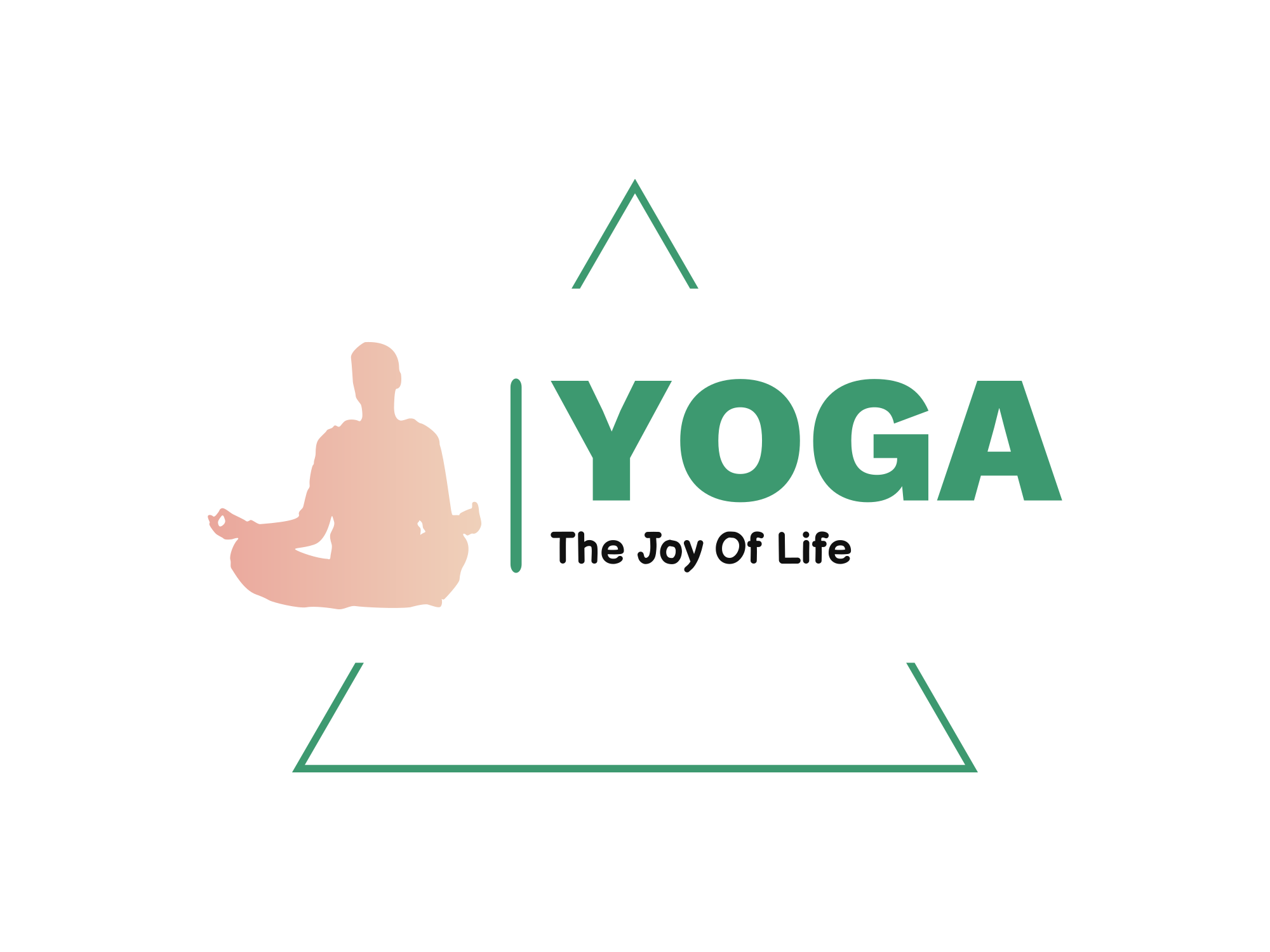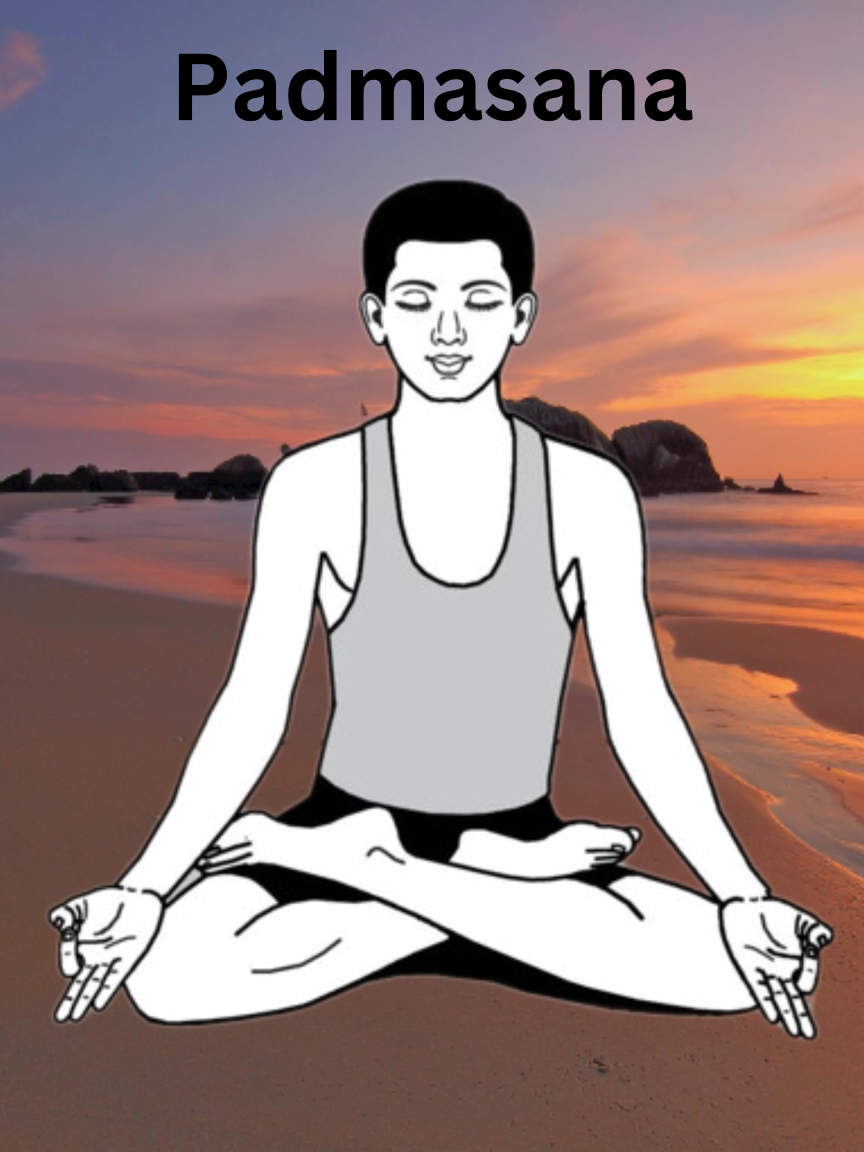What is Padmasana – Padmasana is a Sanskrit language word. Padam means lotus. In the final position of this asana, the shape of our body appears somewhat like a lotus. That’s why it is called Kamalasan or Padmasan.
Explanation- Padmasana is an excellent asana for meditation. In this asana the body can be kept completely stable for a long time. Initially it seems difficult to sit in this asana, but with regular practice it becomes self-evident. In this asana, the body and head remain straight and stable as if they are made of stone and the position of the legs provides a centering base.
How to do Padmasana Pose-
Both the legs are taken in front, and the heels and toes remain together. Waist and neck straight. Eyes ahead Keep both hands on the ground by touching the thighs. Holding the toe of the right foot with the left hand, keep it on the left thigh.
Holding the toe of the left foot with the right hand, keep it on the right thigh.
Keep both hands above the knee. Keeping the waist straight, close the eyes.
Precautions in Padmasana-
1.Padmasana can put any money, those who touch the left foot, those who touch the right foot, can touch the right.
2.The knees of the feet should remain on the ground. In the beginning of padamasana, if the problem comes, then the knees should be kept on the ground with the pressure of the hands.
3.In the last stage of padmasana, the navel should be in the middle of both legs.
4.Those who always complain of knee pain should not do Padmasana.
5.Those who have swollen knees should not do Padmasana
Padmasana Benefits – Padmasan comes under meditative asanas, our sages have considered this asana best for meditation. By closing the eyes and trying to concentrate the mind, by sitting in this posture one can reach the state of meditation.Padmasana is helpful in achieving physical, mental stability and peace, it is not just an ideology. This is also a fact according to physiology. It has been observed that by doing such exercises, the groups of nerves originating from the lower part of the spine and entering the brain (through which the flow of sensations arising within the body) and the nervous system stops being produced. Mental peace is helpful in increasing physical health. In this asana, there is pressure on the lower part of the spine, due to which the nervous system gets relaxed. Breathing slows down, muscle tension reduces and blood pressure decreases. Physical stability brings stability to the mind. Due to the pressure exerted by the position of the legs and placing the feet on the thighs, the flow of blood to the legs is stopped and additional supply of blood is provided to the stomach. Its practice intensifies digestion and increases appetite.
Scientific Benefits of Padmasana –
In the condition of applying Padmasana, the blood flow does not go towards the lower organs. Most of the operations remain towards the abdominal region and upper organs, which helps in the prevention of diseases of these organs. The digestive system starts working smoothly, due to which there is no possibility of stomach-related diseases. Constipation, indigestion, air disorders, these diseases get cured.
After returning from the asana, the circulation of blood is towards the lower organs, which helps in removing the diseases of the thighs, knees, calves, and ankles by reaching pure blood in them. This asana has been considered especially useful for those who have complaints of varicose veins.
Ida and Pingala nadis are two main nadis located in our spine and their veins are spread in every part of the body. It brings the feeling of touch and senses from different parts of the body inside the brain, due to which knowledge and information are generated within our brain. There is dysfunction in the instructions received from the brain and the work performed by Pingala Nadi. That is, according to physiology, there is no excitement in our body and it attains a state of calm. If it is explained in another way then it will be said that there is awakening of beta wave, alpha wave and theta wave respectively. Padmasana gives a feeling of meditation by directing the influence of prana from Muladhara Chakra towards Sahasra Chakra.
Again in the same practice it is said that Jalandhar Bandha and nasal drishti practice should be done. The eyes should be half open and the center of vision should be the front part of the nose. This is a very effective method to make the mind introvert. It is a very powerful medium to concentrate the mind. By practicing Padmasana, the mind and heart become calm and concentrated. It is also said in this mantra that diseases are destroyed by the practice of Padmasana.
Almost the same thing has been said in all the asanas. At the end of every asana it is said that it destroys diseases. So here there can be a doubt that if by practicing these stable asanas our mind becomes calm and thoughts or internal excitement reduces then this is a mental benefit, how can physical diseases be cured by this? To understand this, we will have to understand the yogic therapeutic method.
Yoga says that about 80% of all the diseases that arise in the body start from the mind area and the remaining diseases can be caused by bacteria or external impurities entering into us. In the language of psychology, diseases originating from the mind are called psychosomatic diseases. Diseases that start from the mind and affect the body. According to this principle, when the mind area becomes calm and stable, when its excitement ends and it attains a state of relaxation, there are no internal tensions and troubles, then its effect is visible in the body also. The body itself becomes calm and balanced. starts happening.The second type of diseases are those which start in the body and then affect the mind. These are called somatic mental illnesses. Thus there are two types of diseases.
In the method of modern treatment, it has been seen that after observing the symptoms of the disease, we treat it to remove it. Headache is not a disease, it is a symptom, but we take aspirin to cure it. It cures the symptom not the cause. Like asthma is a symptom. If we take medicine or spray broncho dilator, the respiratory tract expands for a few moments but the disease does not end. Diabetes is also a symptom. We try to speed up the process of the organ which has stopped working externally by taking insulin injection or taking medicine, but we do not try to cure the organ.
Mostly it has been seen that many physical diseases are cured by the practices of Yoga. It has also been used successfully in the prevention of cancer. When research was being done on cancer, such patients were taken for experiments who could not be cured by all types of modern medical and spiritual methods. Chemotherapy, surgery etc. were also used on him. Then they were taught yoga exercises, which prevented and eradicated cancer. The yoga exercises taught to him were very simple. Diseases like cancer can be prevented only by the practice of pranayama, yoga nidra and chanting, then what is the secret behind it.
By practicing Yoga Nidra, the body and conscience attain a state of relaxation. Stress, anxiety and problems go away. Chanting increases self-confidence and Pranayama increases the spiritual power that protects the body and brings balance to the life force. It is really amazing if a disease considered incurable can be cured by just these three measures.
Yoga has adopted this principle for treatment. Many times, looking at the exercises that are prescribed for the prevention of diseases, it seems that they will worsen the disease, but those exercises have a positive effect on the mind, brain, nervous system and endocrine glands and help them function smoothly. Equivalence capacity is obtained
Therefore, it is believed that if the body becomes stable or the mind becomes stable and the stability of the mind affects the body, then diseases are destroyed. Therefore, it has been said in relation to almost every asana that all types of diseases are cured by these asanas.
To get rid of these diseases, do Padmasana-Peace of mind, to concentrate the mind, sexual diseases, hernia, semen defects, eye diseases, Amavat Jathragni, indigestion, intestinal diseases, celibacy, hemorrhoids, piles, etc.

